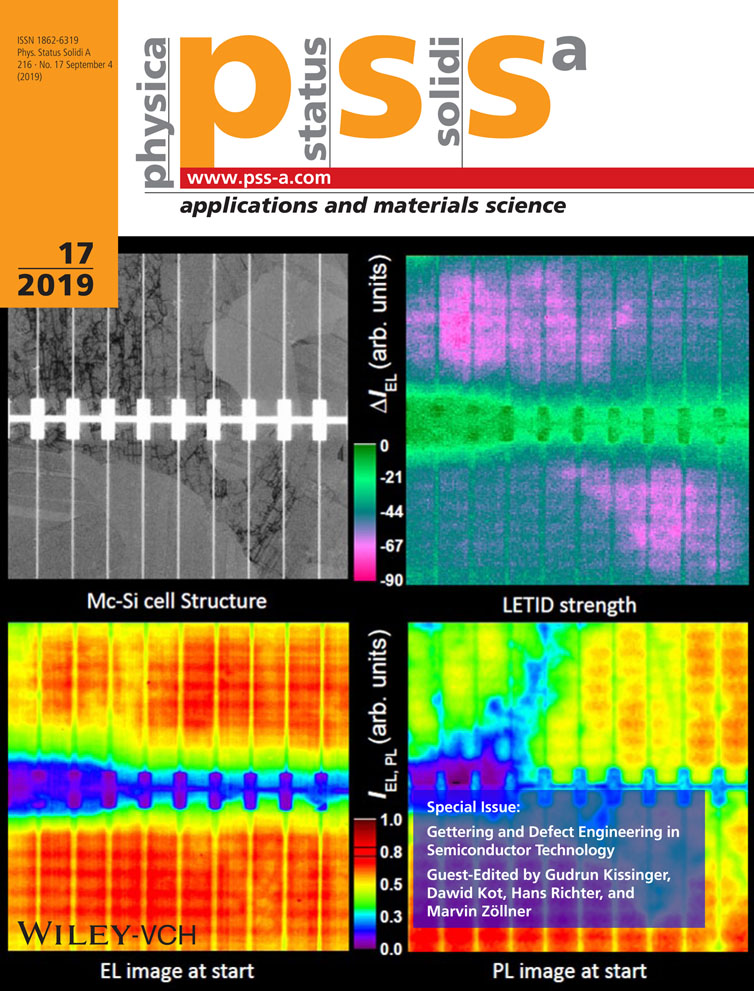Features of the Formation of the BiBs Defect in Si
Abstract
The data on the features of the electronic absorption in boron-doped silicon irradiated at 80 K with 5 MeV electrons are presented in this paper. The electronic transition at a frequency of 4296.8 cm–1 is revealed in the absorption spectra of as-irradiated boron-doped Si samples. The intensity of the registered line grows with the boron concentration. The formation of defect responsible for the 4296.8 cm–1 line is independent of the presence of oxygen and carbon in the samples. The investigations show that the vacancies are not components of the defect related to the 4296.8 cm–1 line. The study of the thermal stability of the revealed defect shows that the disappearance of line at the annealing is accompanied by the synchronous development of the 4385.2 cm–1 absorption line associated with the BiBs defects. The revealed defect is identified as a precursor of a stable configuration of the BiBs complex.
Conflict of Interest
The authors declare no conflict of interest.




